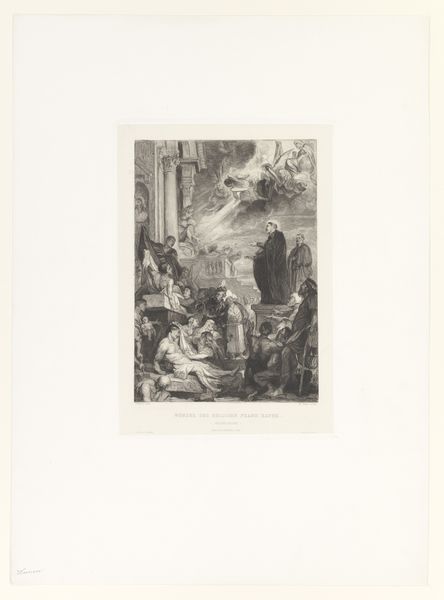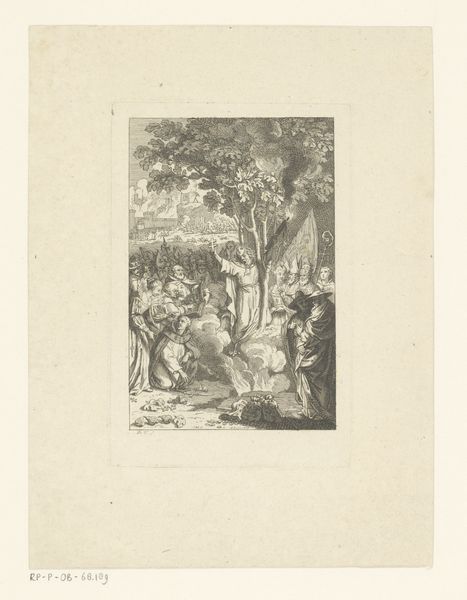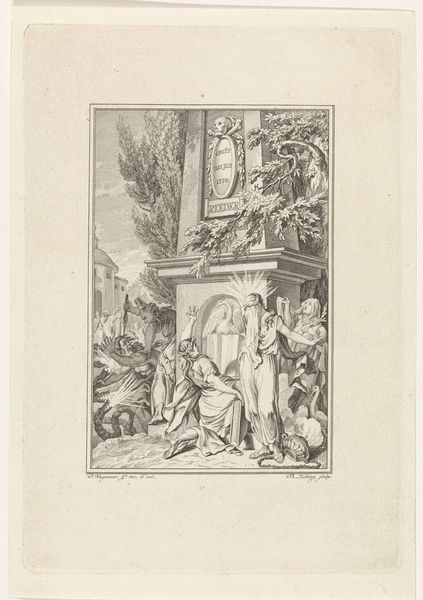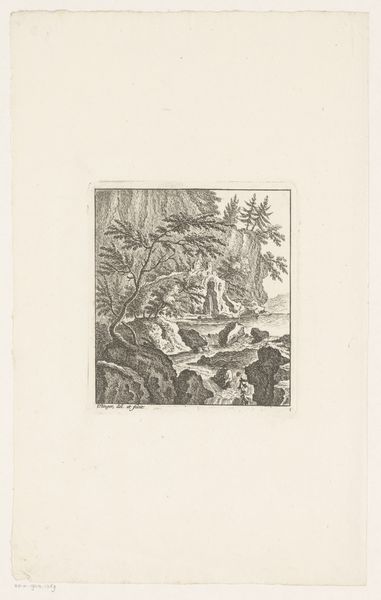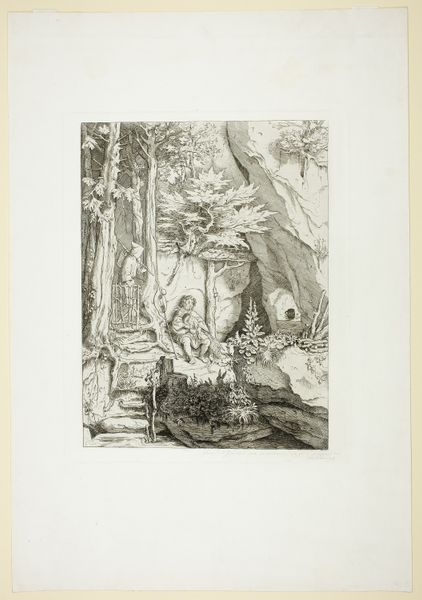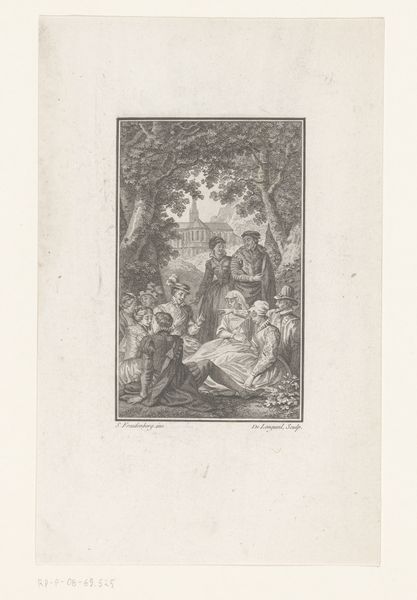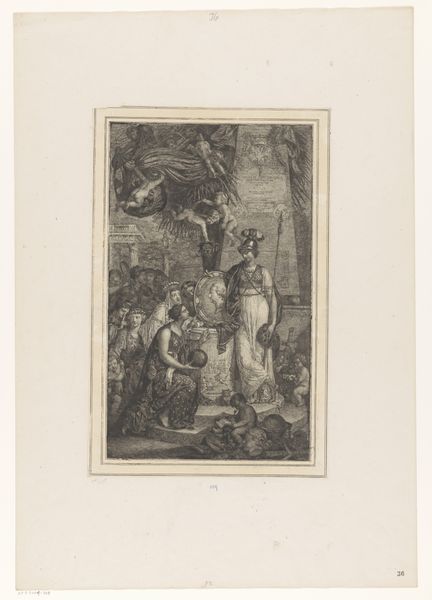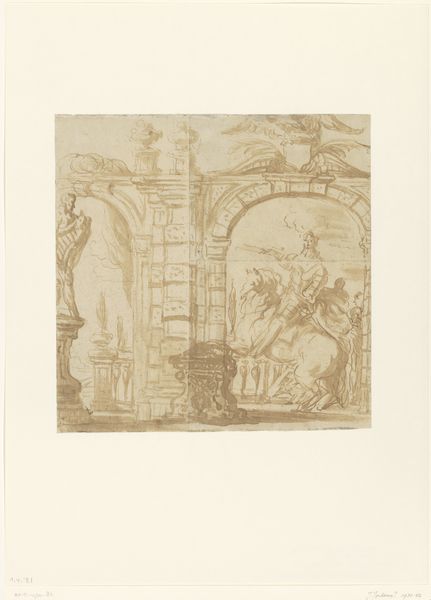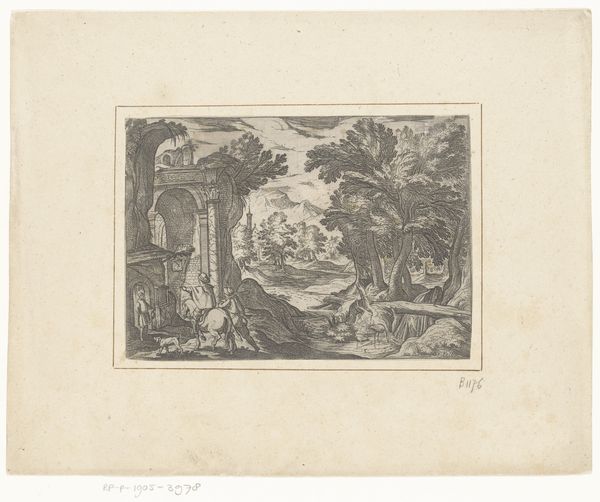
print, engraving
#
baroque
# print
#
old engraving style
#
landscape
#
engraving
Dimensions: height 357 mm, width 236 mm
Copyright: Rijks Museum: Open Domain
Editor: Here we have Georg Sigmund Rösch's "Fontein met man en putti," created around 1745. It's an engraving, full of intricate detail. I’m struck by how this garden scene, with its ornate fountain, almost feels theatrical. What do you see in this piece, beyond just a pretty landscape? Curator: It’s definitely more than just a pleasant scene. Notice how the fountain, adorned with figures, becomes a stage for power. Think about the Baroque period – a time of absolute monarchs and rigid social hierarchies. Fountains like these were statements, displays of wealth and control over nature, and by extension, the populace. Who do you think these "putti" were made for? Editor: Wealthy landowners? Meant to impress guests visiting their estates, demonstrating their status? Curator: Precisely! These kinds of idyllic engravings become fascinating when we understand the power dynamics embedded within them. While it presents an image of pleasure, it’s important to recognize the exclusionary aspects of that pleasure, and the societal inequalities reflected. It’s a beautiful artwork, undeniably, but how do we, as a contemporary audience, reconcile that beauty with the realities of the era? Does appreciating the aesthetic also imply a tacit acceptance of the power structures it represents? Editor: That's a really important question. It makes you consider how art, even something seemingly innocent like a garden scene, can be so deeply intertwined with politics and class. I wouldn't have considered that. Curator: And it’s these conversations – recognizing art’s connections to the society it came from, interrogating what it omits and includes – that allows us to appreciate it more fully, and hopefully move towards a more equitable and inclusive future. Editor: I see the artwork in a whole new light, thinking of it more critically. Thanks!
Comments
No comments
Be the first to comment and join the conversation on the ultimate creative platform.
